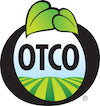Keep It Cool: How to Properly Hydrate During A Workout
By the time you feel thirsty, it may be too late. Dehydration could already be creeping in, leaving you vulnerable to headache, lightheadedness, weakness or even loss of consciousness. Even if you don't get sick, improper hydration can sap you of energy, decreasing your exercise performance.
For most people, water is the best thirst quencher. Except if you're an endurance athlete. We'll get to that later, but for now let's address the most important question: how much should you drink? According to the Institute of Medicine, women need about nine cups of fluid each day, and men need about 13 cups. And if you're active you'll need more: about a cup for every 20 mintes of activity. In hot weather, you’ll need more water — if your pee isn't clear, you're not drinking enough.
Start the hydration process by drinking two to three cups of water about 2 1/2 hours before you start your workout. Then drink another cup half an hour before you start moving. It's also important to keep drinking water during your exercise routine - - aim for a cup every 15 minutes or so. Done exercising? Down another cup within half an hour of ending your workout. You can find out how much water you lose through sweat by weighing yourself before, and after your workout. A pound is about a pint so drink at least two cups of water for every lost notch on the scale.
It's also important not to start your workout dehydrated. If the mercury is rising, or if you've been vomiting or have diarrhea, you'll need more water before lacing up your sneakers (or you may want to skip the workout all together!). During your workout, be on the alert for dehydration symptoms. It's time for a water break if you feel nauseated or overheated, or if you feel yourself losing energy early in your workout. Another way to detect dehydration is to feel your skin. Is it cold and clammy? Water time.
If you run long distances or exercise vigorously for more than an hour at a time, water may not always be the best choice for rehydration. That's because you lose salt as you sweat, leading to a drop in sodium levels. If you overdo the water without replenishing sodium, you can get a dangerous condition called hyponatremia, also referred to as "water poisoning." To prevent this, choose a sports drink that contains sodium, or drink water with a side of salty food, like pretzels, throughout your workout. Gatorade is an effective sports drink, while coconut water doesn't have enough sodium for endurance performances. Another option is to eat a light, high-salt meal a few hours before your workout to raise sodium levels.
Hyponatremia used to be extremely rare, but has become somewhat more common as endurance sports attract new and inexperienced athletes. Unfortunately, the symptoms of both dehydration and hyponatremia are similar: fatigue, vomiting and confusion. Hyponatremia can also cause muscle spasms. If left untreated, it can result in seizures, or even coma. As scary as this may sound, don't let fear deter you from drinking water if you're parched. Water poisoning typically only occurs with extreme activity, and very high water consumption. You're much more likely to become dehydrated than to get hyponatremia during a normal workout, so pick up that water bottle and take a long, refreshing gulp.
image: Keoni Cabral
Leave a comment
Comments will be approved before showing up.



